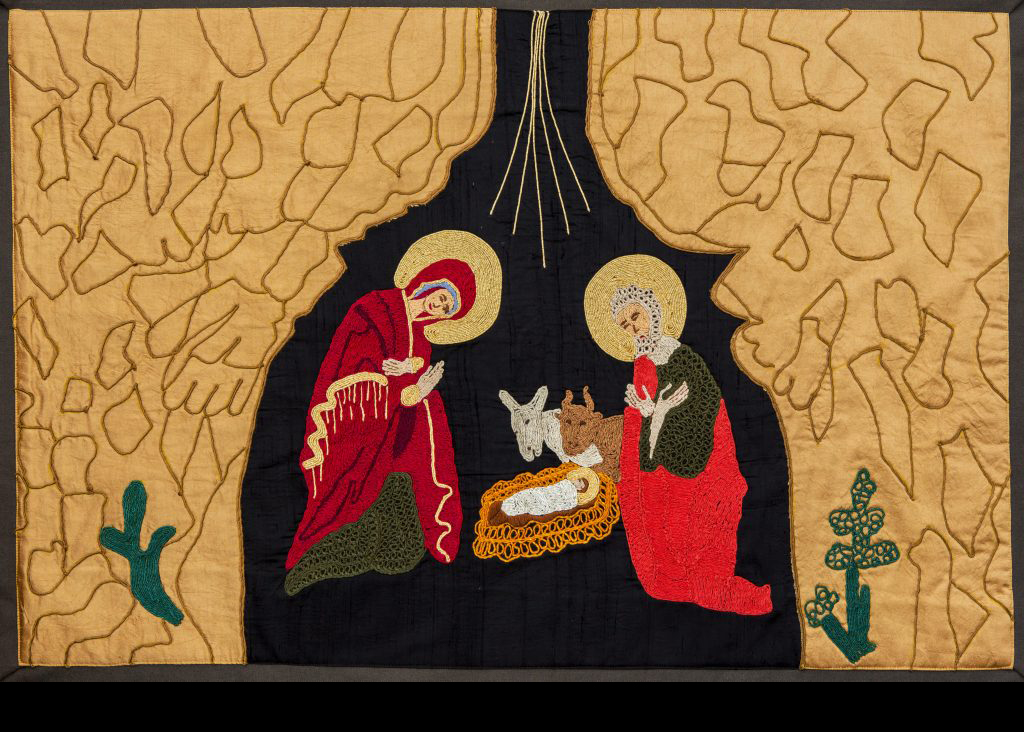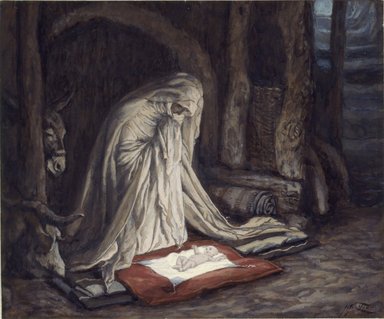U.S. News
Jesus of Nazareth was a Jewish, Palestinian, Refugee
By Matt De Vlieger · December 24, 2023

An Important Birth In Palestine
In the ancient land of Palestine, a humble Jewish family welcomed a son named Jesus. Born into a world marked by political unrest and cultural diversity, Jesus' early years unfolded against a backdrop of societal challenges.According to Christian tradition and the New Testament of the Bible, Jesus was born in a manger in Bethlehem because there was no room for his family in the inn. The Gospel of Luke provides the most detailed account of the Nativity, describing how Mary and Joseph traveled to Bethlehem for the census. Due to the influx of people returning to their ancestral homes, the inns were crowded, and they were unable to find proper accommodations. Hamada Atallah/Palestinian History Tapestry

A Date for Debate
The exact year of Jesus' birth is a topic of historical debate, and there is no consensus among scholars. However, it is commonly believed that Jesus was born between 4 and 6 BCE (Before Common Era). So, as of the current date in 2023, it would be approximately 2029 to 2031 years ago. Keep in mind that the historical record is not precise, and these estimates are based on interpretations of historical and biblical sources. Artist James Tissot/Brooklyn Museum
Early Years in Bethlehem
Growing up in Bethlehem, Jesus' family, like others of similar backround faced hardships amid Roman rule. The cultural tensions and political struggles around him framed his perception of the world. He was, in essence, a refugee within his homeland. John Everett Millais/Public Domain
Flight to Egypt as a Refugee
As the political climate intensified, Jesus and his family embarked on a perilous journey to Egypt, mirroring the experiences of modern-day refugees. Their story unfolded against a backdrop of persecution and the search for a new home in a foreign land.
Return to Nazareth
Upon returning to Nazareth, Jesus and his family grappled with cultural adjustments and tensions. Displacement and the quest for a sense of belonging became integral to their narrative. James Tissot/Brooklyn Museum
The Ministry
In adulthood, Jesus initiated his ministry, weaving teachings that resonated with the marginalized and displaced. His parables drew direct parallels with the challenges faced by refugees, emphasizing compassion and empathy. These became the foundation for the New Testament. Vocation of the Apostles (1481) by Domenico Ghirlandaio/Web Gallery of Art
Roman Crucifixion in Jerusalem, Palestine
The events leading to Jesus' crucifixion were set against a backdrop of political turmoil. His resurrection symbolized hope and renewal, reflecting the resilience of refugees overcoming adversity. According to Christian tradition and biblical accounts, Jesus was crucified in Jerusalem. The specific location is believed to be a hill outside the city walls, known as Golgotha or Calvary. This event is a central and significant aspect of Christian theology, marking the crucifixion as the means of atonement for sins and the eventual resurrection of Jesus. The exact historical accuracy of these details, however, can be challenging to verify with certainty due to the limited historical records from that time. Gaudenzio Ferrari/Public Domain
The Real Jesus
Jesus' life as a Jewish Palestinian refugee became a universal narrative, transcending cultural and historical boundaries. His legacy endured as a symbol of compassion and justice, inspiring empathy, understanding, and unity in the face of displacement and adversity.The image shows a rendering of what the real, historical Jesus may have looked.